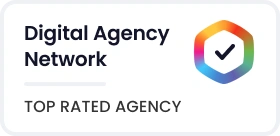Content
SHARE

In today’s dynamic marketplace, harnessing the power of data analytics for marketing tactics is indispensable for effective strategies. Leveraging data-driven marketing is no longer optional—it is essential for achieving measurable success. The modern marketing landscape demands precision and personalisation, which can be achieved by creating data-driven strategies.
By integrating comprehensive data collection, sophisticated tools, and iterative optimisation, raw data is collected and transformed into actionable strategies that resonate with target audiences, leading to more personalised and efficient specific marketing efforts. These days, numerous marketing managers accommodate their team members by taking short relevant business courses in data analytics in digital marketing, fostering innovation and competitiveness within the organisation.
Gathering and Analysing Data for Digital Marketing
Gathering and Analysing Data plays a crucial role in the success of digital marketing. The marketing team relies on marketing data analytics to measure the performance of their marketing initiatives across various marketing channels. By using predictive analytics and data analytics models, marketers utilise all strategies and make decisions to improve their marketing activities.
Analytics can help analyse data to determine the effectiveness of their digital marketing campaigns and tactics. Utilising marketing tools and data visualisation, they can visualise data from various data sources to make better marketing decisions and sales efforts within the constraints of their marketing budget.
Marketers use various kinds of data to gain insights across multiple channels to better understand their customers and how to motivate them to purchase. Here are the key types of data marketers work with:
- Demographic Data: Demographic data helps segment their audience and tailor messages to specific groups.
- Behavioural Data: Behavioural insights allow marketers to predict future actions and personalise offers.
- Website Data: Website data provides a clear picture of how visitors engage with a site and identifies areas for improvement.
- Customer Journey Data: Understanding the customer journey helps optimise touchpoints and improve the customer experience.
Data Collection Methods for Marketing Data Analytics
Data collection methods in marketing and sales encompass a variety of tools and techniques aimed at gathering diverse data from multiple sources. Analytics provide marketers with historical data and insights that are essential in deepening their understanding of the campaign’s performance. These insights act as a guide to informed decisions in optimising marketing campaigns. Here are some common data collection methods:
- Surveys: Conducting surveys can provide valuable insights into customer preferences, satisfaction, and expectations. Surveys can be distributed via email, websites, or social media.
- Web Analytics: Tools like Google Analytics track and report website traffic, offering in-depth insights into user behaviour and site performance. These analytics help understand visitor actions and optimise web content.
- Social Media Monitoring: By monitoring social media platforms, marketers can gather data on brand mentions, customer sentiment, and engagement levels. This information is crucial for managing brand reputation and understanding audience preferences.
Marketing Analytics Tools and Technologies
Marketers use analytics tools to analyse and leverage marketing data effectively, each designed to accommodate various analytical requirements and preferences. These tools offer various functionalities, from data collection to visualisation. Some of the notable options include:
- Website Analytics: Powerful analytics programs, such as Google Analytics 4, Similarweb, and Adobe Analytics, provide comprehensive data on website traffic, user behaviour, and conversion tracking. These tools help understand how users interact with their sites and measure campaign performance.
- Business Intelligence (BI) Platforms: Business intelligence platforms like Tableau, Power BI, and Looker offer robust capabilities for data analysis, visualisation, and reporting. These platforms enable marketers to derive actionable insights from complex datasets, uncovering trends, patterns, and correlations to inform strategic decision-making.
- CRM Systems: Customer Relationship Management (CRM) systems like Salesforce and HubSpot store and manage customer data. They facilitate better customer interactions, track sales activities, and automate marketing tasks.
- Social Media Analytics Tools: Platforms like Hootsuite, Sprout Social, and Buffer offer analytics capabilities to track social media performance, measure engagement, and monitor brand mentions.
- Search Engine Optimisation (SEO) tools: SEO tools like Ahrefs, SEMRush, Moz, and others provide insights and functionalities for optimising website content and improving search engine rankings. They help monitor performance, conduct keyword research, and identify opportunities to enhance their online presence.
- Backup Software: When dealing with sensitive marketing information, ensuring data protection is essential for maintaining business continuity. When gathering large volumes of marketing data, you need to have a backup software solution to keep your company’s data safe. Backup software can automatically store copies of your data, ensuring that it remains secure in case of hardware failures or cyber threats.
Work with your IT team to check out some backup software examples and develop a strategy to fight against marketing data loss. By implementing reliable backup software, you can safeguard crucial marketing assets and reduce the risk of costly data breaches or loss.
Interpreting Data Analysis
Interpreting data requires understanding the significance of various metrics and how they relate to marketing goals. This process involves interpreting data points, identifying patterns and trends, and segmenting the audience to create targeted and effective strategies.
Marketers must interpret the different data types from multiple lenses to anticipate future consumer behaviour and update strategies. Here’s why the data matters:
- Seasonal Trends: Identifying seasonal spikes in sales or website traffic can help plan timely campaigns and promotions. For example, a retailer might notice increased sales during the holiday season and prepare targeted marketing to capitalise on this trend.
- Behavioural Patterns: Understanding how different audience segments behave over time allows for more personalised marketing. For instance, if data shows that a particular demographic prefers email over social media, efforts can be focused on enhancing email marketing campaigns for that group.
- Market Trends: Monitoring broader market trends helps businesses stay competitive and adapt to changing consumer preferences. For example, a rise in mobile shopping trends would prompt a business to optimise its website for mobile users.
Create Actionable Strategies
Creating actionable strategies requires businesses to utilise data analytics in marketing to analyse marketing data effectively. By using advanced analytics and studying historical data of key marketing initiatives, companies can develop strategies to improve marketing. This includes using marketing automation and leveraging data analytics to make data-driven decisions.
With a wealth of available data, businesses can utilise different data sets, including web analytics, to gain insights into consumer behaviour. Data analytics helps companies to analyse and use data to understand customer preferences. Effective digital marketing strategies can be developed using data analytics to make decisions.
The foundational step in creating effective strategies is aligning insights with marketing goals. Establishing objectives based on insights is the process’s initial phase. Here’s how to set objectives:
- Define Clear Goals
- Align with Business Objectives
- Prioritise Based on Insights
Creating Targeted Campaigns
Designing campaigns based on data insights is a crucial part of your strategy, helping to keep them relevant and effective.
Data can be used to segment your audience into specific groups based on demographics, behaviour, and preferences. This allows for more precise targeting. For instance, a clothing retailer might create campaigns for young adults and middle-aged professionals, reflecting their distinct fashion preferences.
You could also choose the most effective channels for reaching each segment. Insights might reveal that one group prefers email communication, while another is more responsive on social media. This information lets you decide whether to focus more resources on social media strategies or email marketing.
Another way to use data is to personalise and customise marketing messages. This enhances the relevance and effectiveness of campaigns. Here’s how to achieve this:
- Dynamic Content: Employ dynamic content in emails and websites to display personalised messages based on user data. For instance, show product recommendations based on a user’s browsing history or past purchases.
- Personalised Emails: Segment email lists to send customised emails that address each group’s specific needs and interests. For example, send a discount offer on baby products to parents who have recently purchased children’s items.
- Customer Journey Mapping: Use data to map customer journeys and tailor interactions at each stage. For instance, first-time visitors can receive introductory offers, while returning customers might receive loyalty rewards or product updates.
- Behavioural Triggers: Set up automated campaigns triggered by user actions. For example, send a follow-up email to users who abandoned their shopping cart, offering an incentive to complete the purchase.
Measure and Optimise Your Campaigns for Best Marketing
Ensuring the measurement and optimisation of your campaigns is critical for success in today’s competitive business landscape. By systematically tracking essential performance metrics and thoroughly analysing campaign data, businesses gain valuable insights into the effectiveness of their strategies and areas that require improvement. This data-driven approach empowers organisations to refine their tactics, allocate resources more efficiently, and achieve maximum Key Performance indicators (KPI). Those KPIs might include:
- Website Traffic
- Social media reach
- Impressions
- Conversion rates
- Cost per acquisition (CPA)
- Return on investment (ROI)
Select KPIs that provide actionable insights. For instance, conversion rates, cost per acquisition (CPA), and return on investment (ROI) offer clear indicators of campaign performance and areas needing improvement.
Then, regularly track and review KPIs to stay informed about campaign performance. You can set up dashboards and reports to visualise data and identify trends quickly.
A/B Testing and Feedback Loops
One way to optimise your campaigns is through A/B testing and a feedback loop. You can conduct A/B tests to compare different versions of a campaign element, such as email subject lines, ad headlines, or landing page designs. Analyse the results to determine which version performs better and why.
Another way to optimise your campaigns is to use customer feedback insights to make informed strategy changes. For example, if customers suggest your website is difficult to navigate, invest in a redesign to improve user experience.
Continuous Optimisation
Continuous optimisation involves constantly refining marketing strategies to achieve better results. Many marketing decisions are now based on data-driven insights obtained through marketing analytics. By using marketing data analysis, businesses are informed of insights that help them make decisions about allocating resources best and optimising marketing spending effectively.
Navigating the Complexities of Analysing Marketing Data
Marketing analytics involves using data to evaluate marketing and make decisions. However, the role of analytics can become overwhelming due to several factors:
- Tools and Insights: Marketing analytics equips businesses with tools to assess marketing metrics and refine strategies for optimal performance, but mastering these tools can be complex.
- Data Overload: Coping with copious amounts of data poses a significant challenge, requiring efficient processing and effective interpretation methods.
- Informed Decision-Making: Relying on evidence-based insights rather than gut instincts is essential for making informed marketing decisions that yield tangible results.
- Data Transformation: Employing techniques to distil pertinent insights from vast datasets is critical to navigating the complexities of marketing analytics.
Conclusion
Leveraging data analysis in marketing is no longer optional—it’s essential for achieving measurable success. The modern marketing landscape demands precision and personalisation; you can create strategies driven by data. By integrating comprehensive data collection, sophisticated tools, and iterative optimisation, marketing professionals can transform raw data into actionable strategies that resonate with target audiences.
About the Author
Guest Post Author: Imed Bouchrika
Bio: Imed Bouchrika, a Computer Science professor from the University of Southampton, UK, specialises in eLearning, image processing, and biometrics. He contributes to journals, conferences, and IT start-ups.
Frequently Asked Questions About From Spreadsheet Chaos to Data Harmony-Navigating Business Intelligence Software for 2025
What is data-driven marketing?
Data-driven marketing involves using data analytics to tailor strategies based on insights gathered from customer data. This approach helps make decisions that improve marketing effectiveness and customer engagement.
Why is it important to use data analytics in marketing?
Utilising data analytics is crucial because it allows marketers to understand customer preferences and behaviours, optimise campaigns, and measure effectiveness, thereby enhancing the ROI of marketing.
What types of data are most important for marketers?
The key data types important for marketers include demographic, behavioural, website, and customer journey data. Each type provides different insights that help tailor strategies to meet consumer needs.
How can marketers collect data effectively?
Marketers can collect data through various methods such as surveys, web analytics tools like Google Analytics, social media monitoring, and CRM systems to track customer interactions and preferences.
What are some common tools used in marketing analytics?
Common tools include website analytics platforms (e.g., Google Analytics 4, Adobe Analytics), business intelligence platforms (e.g., Tableau, Power BI), CRM systems (e.g., Salesforce, HubSpot), and social media analytics tools (e.g., Hootsuite, Sprout Social).
How can data help in customer segmentation?
Data aids in segmenting the market into groups based on demographics, behaviours, and geographic locations. This allows for more targeted and personalised marketing, enhancing the relevance and effectiveness of campaigns.
What is the role of A/B testing in optimising marketing campaigns?
A/B testing involves comparing two versions of a marketing element to see which performs better. It is crucial to optimise strategies by determining more effective tactics based on empirical data.
How does continuous optimisation improve marketing strategies?
Continuous optimisation involves regularly updating and refining marketing strategies based on ongoing data analysis. This dynamic approach helps businesses adapt to market changes and improve marketing effectiveness.
What are the challenges of using marketing analytics?
Challenges include mastering complex analytics tools, managing large volumes of data, and making informed decisions based on data insights rather than intuition.
How do marketers use data to create actionable strategies?
Marketers use data to define goals, align marketing objectives with business strategies, and prioritise insights-based efforts. They utilise data to segment audiences, create targeted campaigns, and measure the effectiveness of these campaigns through KPIs.












